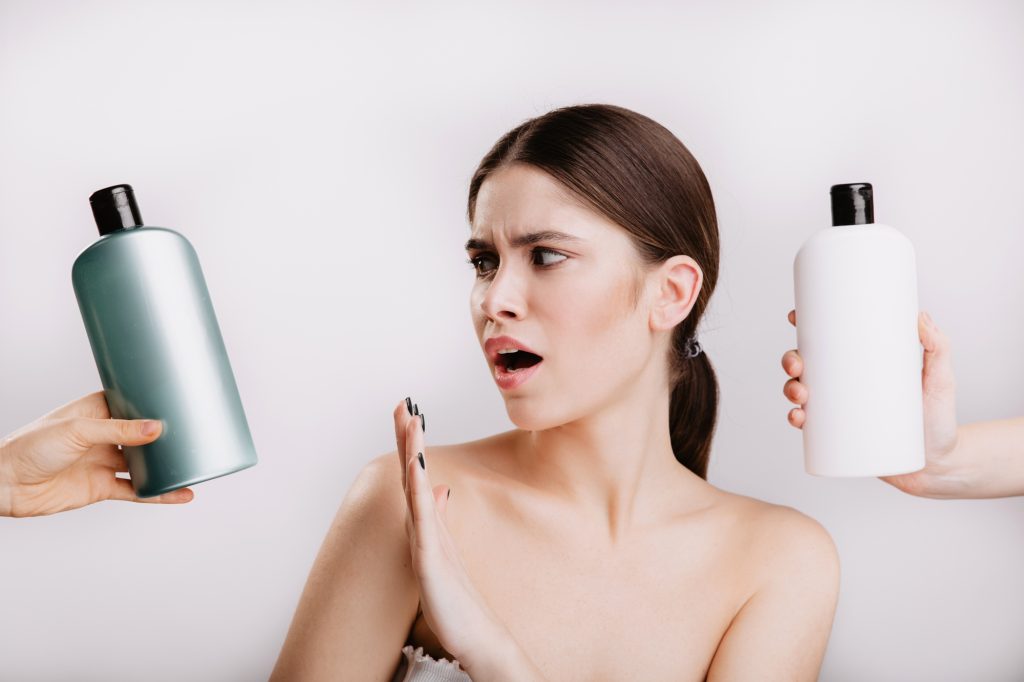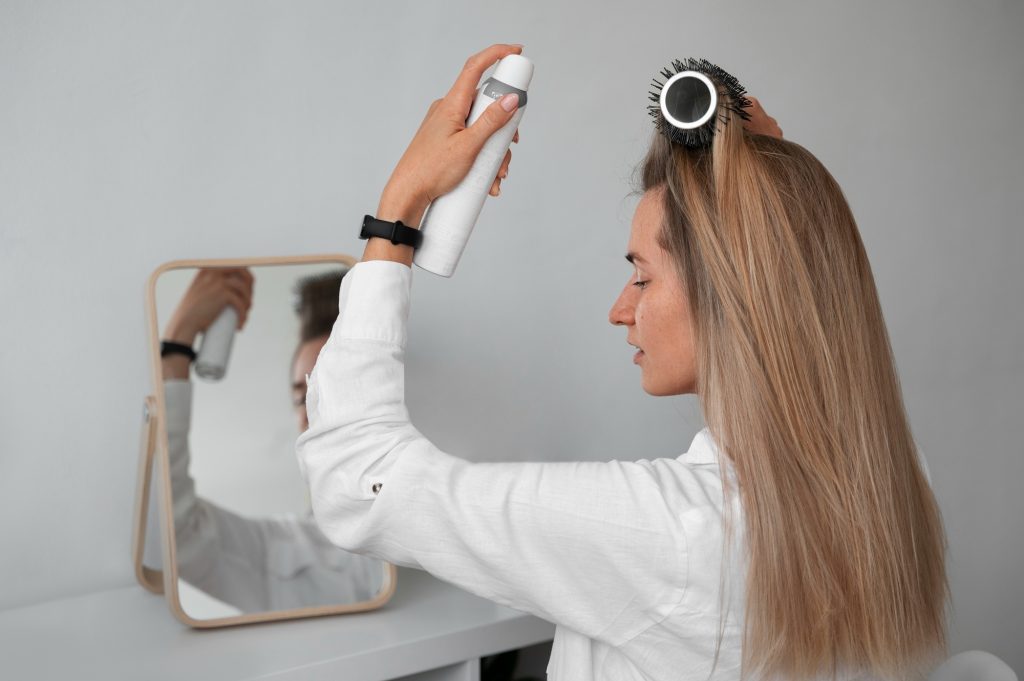Discover the importance of avoiding specific products and ingredients after undergoing a chemical treatment.
Avoiding Specific Products and Ingredients After a Chemical Treatment
Chemical treatments can work wonders for your skin and hair, but they also require proper care and attention afterwards. If you’ve recently undergone a chemical treatment and want to make the most out of your results, it’s important to know what to avoid. In this article, we’ll dive deep into the world of chemical treatments, explore the role of aftercare, identify harmful ingredients to watch out for, offer safe alternatives, and share some tips for maintaining your newfound health. So sit back, relax, and let’s get started!

Understanding Chemical Treatments
Before we delve into the aftercare, let’s take a moment to understand what chemical treatments are all about. In a nutshell, a chemical treatment is a procedure that involves the use of various chemicals to alter the structure and appearance of your skin or hair. These treatments can range from relaxers and keratin treatments to peels and exfoliants. They can create stunning transformations, but they also come with their fair share of risks if not properly cared for.
What is a Chemical Treatment?
A chemical treatment is a carefully orchestrated process that involves the application of specific chemicals to your skin or hair. The purpose is to achieve a desired result, such as straighter hair, smoother skin, or a more even complexion. The chemicals used during these treatments can be quite powerful and should be handled with care.
When it comes to hair treatments, relaxers are a popular choice. These treatments are designed to straighten and soften curly or frizzy hair. They usually contain chemicals like sodium hydroxide or ammonium thioglycolate. By breaking down the protein structure of the hair, relaxers can transform tight curls into sleek, straight strands. However, it’s important to note that relaxers can be harsh on the hair and scalp if not used correctly.
Another type of chemical treatment for hair is the keratin treatment. These treatments aim to smooth and straighten hair by infusing it with keratin protein. Keratin is a natural protein found in hair, and by replenishing it, these treatments can improve the overall texture and manageability of the hair. Formaldehyde-free options are available for those concerned about harsh chemicals.
When it comes to skincare, chemical peels are a popular choice. These treatments involve the application of acid solutions to the skin, resulting in exfoliation and the removal of dead skin cells. Chemical peels can improve the appearance of acne scars, wrinkles, and uneven skin tone. There are different types of chemical peels available, ranging from mild to deep, depending on the desired level of exfoliation.
Exfoliants are also commonly used in both facial and body treatments. These products contain ingredients like alpha-hydroxy acids (AHAs) or beta-hydroxy acids (BHAs) that help remove dead skin cells, revealing a fresh and radiant complexion. Regular exfoliation can improve the texture and appearance of the skin, making it smoother and more even-toned.
Common Types of Chemical Treatments
There are many different types of chemical treatments available, each with its own unique purpose. Some of the most common ones include:
- Relaxers: These treatments are designed to straighten and soften curly or frizzy hair. They usually contain chemicals like sodium hydroxide or ammonium thioglycolate.
- Keratin Treatments: These aim to smooth and straighten hair by infusing it with keratin protein. Formaldehyde-free options are available for those concerned about harsh chemicals.
- Chemical Peels: These treatments involve the application of acid solutions to the skin, resulting in exfoliation and the removal of dead skin cells. They can improve the appearance of acne scars, wrinkles, and uneven skin tone.
- Exfoliants: These can be used on both the face and body to remove dead skin cells, leaving behind a fresh and radiant complexion.
Now that you have a clearer understanding of what chemical treatments are, let’s move on to why aftercare is so crucial.
The Importance of Aftercare Post-Chemical Treatment
Aftercare is like the cherry on top of a delicious dessert. It completes the process, ensuring maximum benefits and minimizing potential risks. Proper aftercare can mean the difference between enjoying your amazing results and experiencing unwanted side effects. So let’s explore the role of aftercare in the recovery process.
When it comes to chemical treatments, whether it’s a facial peel or a hair dye, your skin and hair undergo significant changes. These treatments work by altering the structure and composition of your skin or hair, which can leave them more vulnerable and in need of extra care. This is where aftercare steps in to provide the necessary support and nourishment.
The Role of Aftercare in Recovery
After undergoing a chemical treatment, your skin and hair need a little extra TLC. Aftercare plays a vital role in the recovery process by nurturing and protecting your freshly treated areas. It helps maintain the desired results and keeps your skin and hair healthy and happy.
One of the primary goals of aftercare is to promote healing. Chemical treatments can cause temporary damage to your skin or hair, and aftercare steps help speed up the recovery process. By providing the right nutrients and hydration, aftercare products assist in repairing any damage caused during the treatment.
Moreover, aftercare also helps to prolong the effects of the treatment. Whether you’ve undergone a chemical peel to improve your skin’s texture or a hair treatment to enhance color, aftercare ensures that the results last longer. By following the recommended aftercare routine, you can enjoy the benefits of your treatment for an extended period.
Potential Risks of Neglecting Aftercare
Yes, neglecting aftercare can have consequences. Skipping this vital step can lead to dryness, irritation, breakouts, and even damage to your skin and hair. It’s essential to give your body the love and care it deserves after a chemical treatment.
When you neglect aftercare, your skin or hair may struggle to recover from the treatment. Without the proper nourishment and protection, the freshly treated areas can become dry and prone to irritation. This can result in discomfort and a prolonged recovery period.
In some cases, neglecting aftercare can even reverse the desired effects of the treatment. For example, if you’ve undergone a hair dye treatment, skipping aftercare steps may cause the color to fade quickly or become uneven. Similarly, if you’ve had a chemical peel, inadequate aftercare can hinder the improvement in your skin’s texture and tone.
Furthermore, neglecting aftercare can increase the risk of complications. Without proper hygiene and maintenance, the treated areas may become more susceptible to infections or other adverse reactions. It’s crucial to follow the aftercare instructions provided by your professional to minimize these risks.
Products to Avoid Post-Chemical Treatment
Now that you understand the importance of aftercare, it’s time to learn about the products and ingredients to steer clear of. By avoiding these harmful substances, you’ll allow your skin and hair to thrive and maintain their newfound health.
After undergoing a chemical treatment, whether it’s a facial peel or a hair straightening procedure, your skin and hair require extra care and attention. The products you use during this crucial period can make all the difference in the longevity and effectiveness of your treatment.
Harmful Ingredients in Skincare Products
Some skincare products contain ingredients that can be harmful, especially after a chemical treatment. It’s essential to be aware of these substances to protect your skin from potential damage. One of the main culprits is alcohol, which can be found in toners, astringents, and some cleansers. While alcohol may give you a temporary feeling of freshness, it can actually strip your skin of its natural moisture and disrupt its delicate balance.
In addition to alcohol, fragrances are another ingredient to watch out for. Many skincare products, including moisturizers and serums, contain artificial fragrances to enhance the sensory experience. However, these fragrances can be irritating to the skin, leading to redness, itching, and even allergic reactions. To avoid any unwanted side effects, opt for fragrance-free products or those that use natural, non-irritating scents.
Sulfates, such as sodium lauryl sulfate (SLS) and sodium laureth sulfate (SLES), are commonly found in cleansers and shampoos. These surfactants create a rich lather and effectively remove dirt and oil from the skin and hair. However, they can also strip away the natural oils that act as a protective barrier, leaving your skin dry and your hair brittle. Look for sulfate-free alternatives that are gentle and nourishing.
Haircare Products to Steer Clear of
When it comes to haircare, some products can be detrimental to your freshly treated locks. After undergoing a chemical treatment like a keratin treatment or a perm, your hair needs extra care and attention to maintain its newfound smoothness or curls.
Sodium lauryl sulfate (SLS) is a common ingredient found in many shampoos and conditioners. While it effectively cleanses the hair, it can also strip away the keratin from keratin-treated hair. This can lead to frizz, breakage, and a loss of the treatment’s benefits. To preserve the integrity of your keratin-treated hair, opt for sulfate-free or specifically formulated products that are gentle and nourishing.
In addition to sulfates, it’s important to avoid haircare products that contain heavy oils and silicones. These ingredients can weigh down your strands, making them look greasy and flat. After investing time and money into a chemical treatment, you want your hair to have volume, shine, and movement. Look for lightweight, oil-free products that provide hydration without compromising your desired hairstyle.
Remember, after a chemical treatment, your skin and hair are in a delicate state. Choosing the right products and avoiding harmful ingredients will help you maintain the results of your treatment and promote overall health and vitality. Take the time to read product labels, do research, and consult with professionals to ensure you’re using the best aftercare products for your specific needs.
Safe Alternatives for Post-Treatment Care
Now that you know what to avoid, let’s explore some safe alternatives for post-chemical treatment care. There are plenty of nourishing and natural ingredients that can work wonders for your skin and hair, without any harmful side effects.
Natural Ingredients for Skin and Hair Care
When it comes to skincare, ingredients like aloe vera, chamomile, and hyaluronic acid are gentle and soothing. They can hydrate your skin, promote healing, and reduce any redness or inflammation. For your hair, look for products containing argan oil, coconut oil, or shea butter. These ingredients can nourish, moisturize, and protect your tresses.
Recommended Products for Post-Chemical Treatment
If you’re not up for a DIY approach, there are plenty of products available specifically designed for post-chemical treatment care. Look for brands that specialize in gentle and nourishing formulas, free from harsh chemicals. Remember to always read the labels and do a patch test to ensure compatibility with your skin and hair.
Tips for Maintaining Health Post-Chemical Treatment
Proper aftercare involves more than just using the right products. It also requires some lifestyle changes and regular check-ups. Implementing these tips will help you maintain your health and get the most out of your chemical treatment.

Lifestyle Changes for Better Recovery
Stay hydrated by drinking plenty of water, eat a balanced diet rich in nutrients, and avoid excessive heat and sun exposure. These simple lifestyle changes can have a significant impact on your recovery and overall well-being.
Regular Check-ups and Follow-ups
Don’t forget to schedule regular check-ups with your skincare or haircare professional. They will assess your progress, provide additional guidance, and make any necessary adjustments to your aftercare routine. Remember, your journey doesn’t end after the treatment; it’s an ongoing process.
By now, you should have a solid grasp of how to avoid specific products and ingredients after a chemical treatment. Following these guidelines will help ensure a successful recovery and maintain your fabulous results. So go forth, armed with knowledge, and take care of your skin and hair like the superstar that you are!





